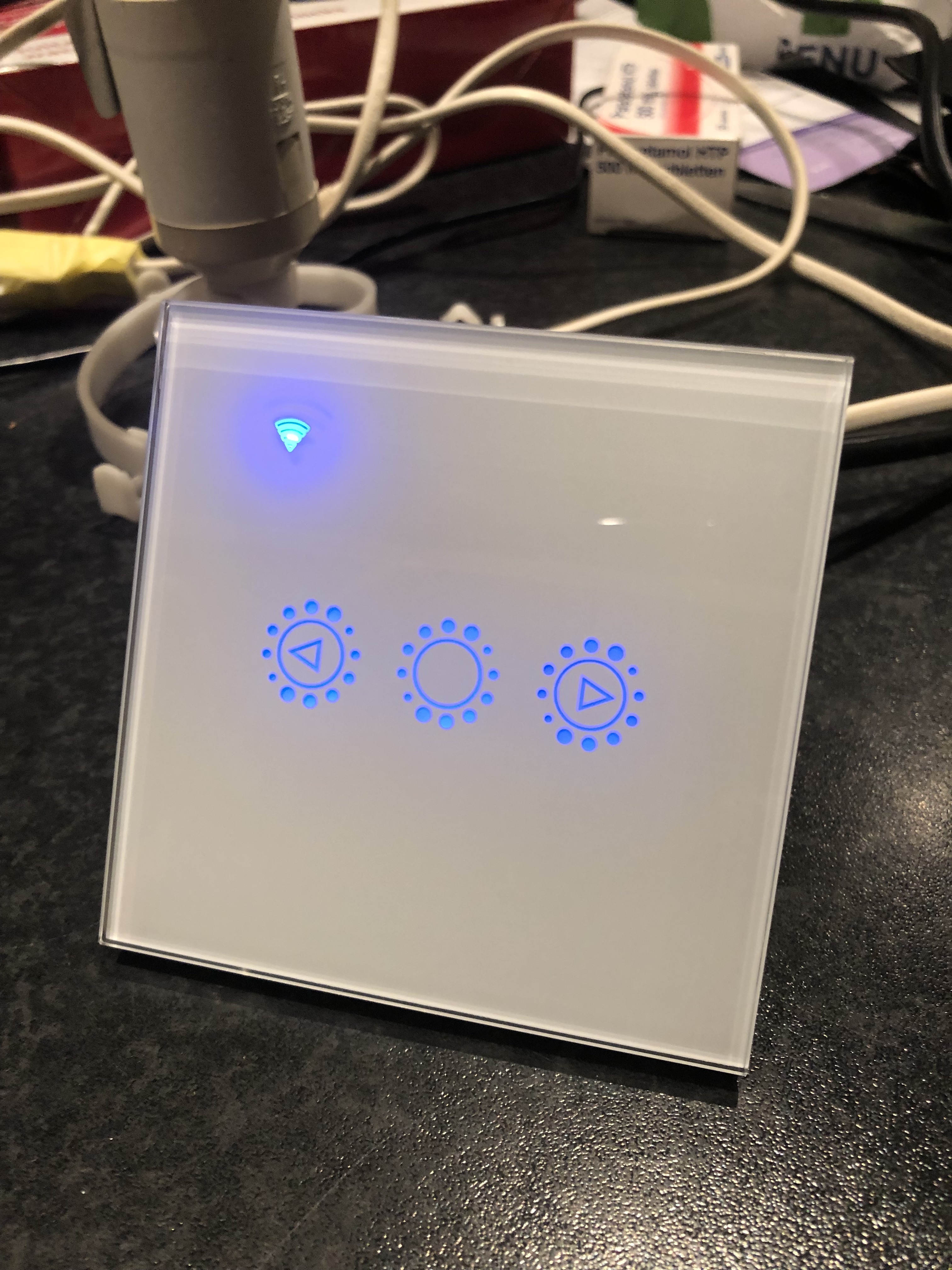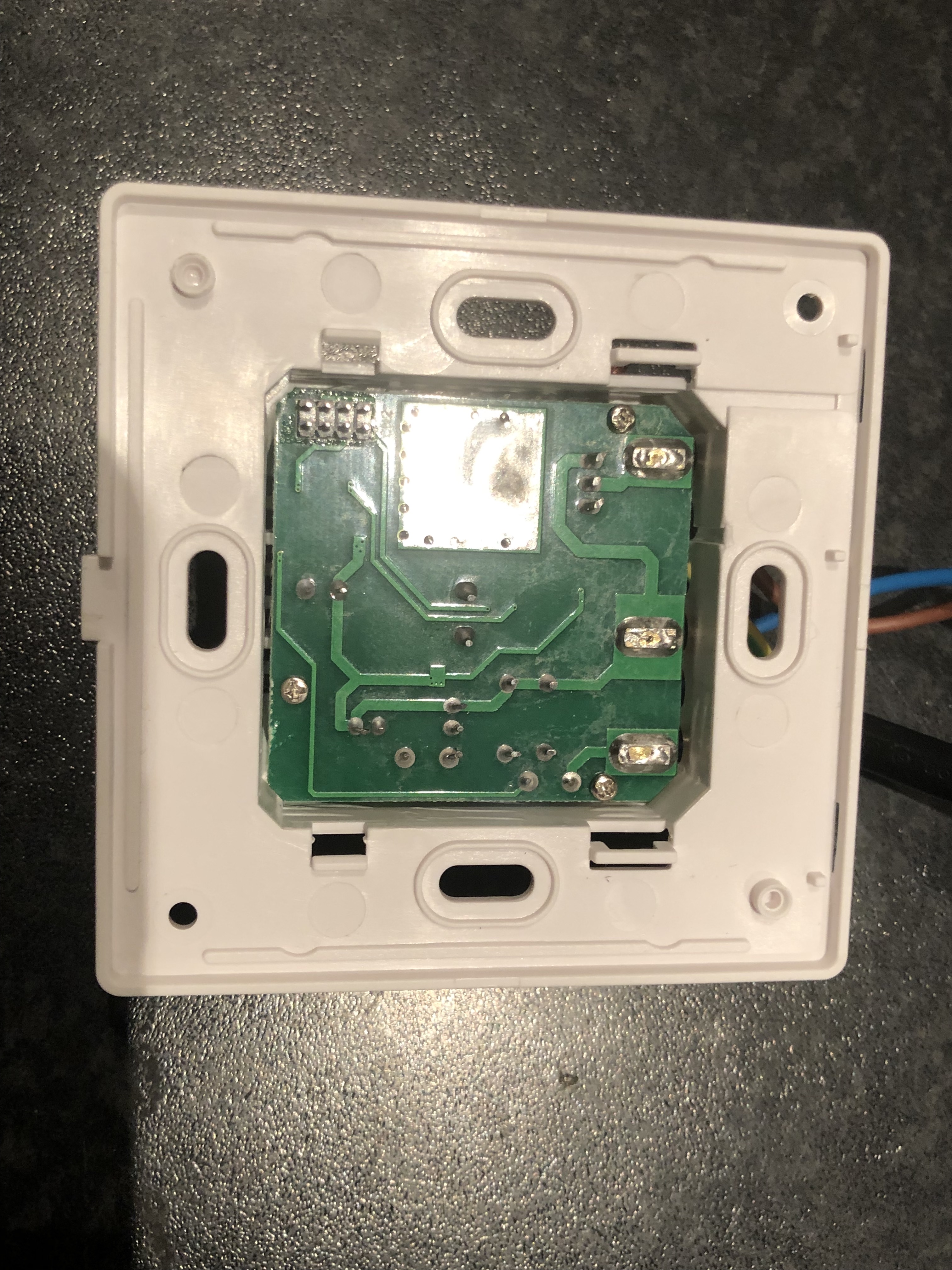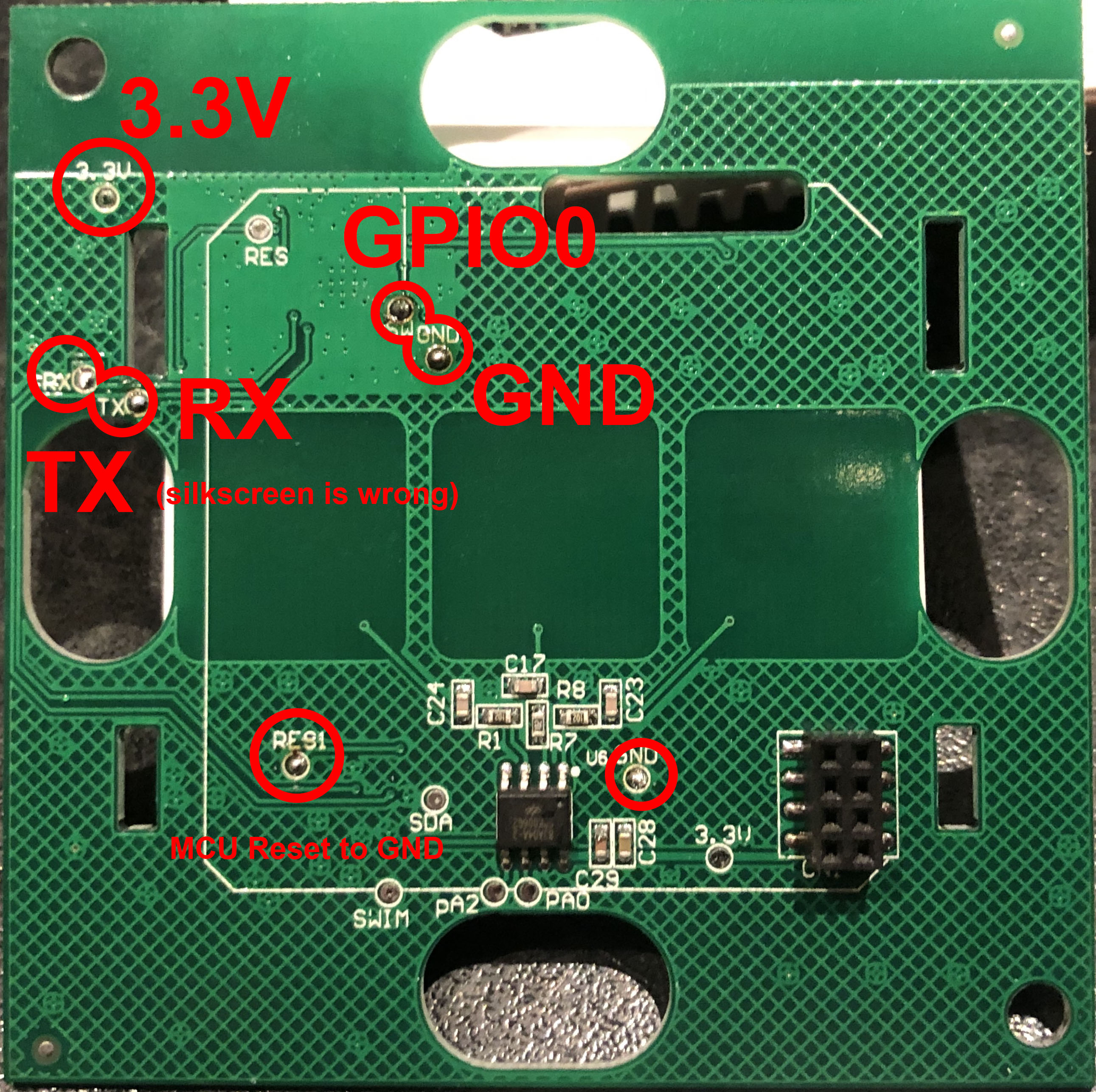
Available from:
Aliexpress.com
| GPIO # | Component |
|---|---|
| GPIO00 | None |
| GPIO01 | Serial Tx |
| GPIO02 | None |
| GPIO03 | Serial Rx |
| GPIO04 | None |
| GPIO05 | None |
| GPIO09 | None |
| GPIO10 | None |
| GPIO12 | None |
| GPIO13 | Led1 |
| GPIO14 | None |
| GPIO15 | None |
| GPIO16 | None |
| FLAG | None |
{"NAME":"PS-16-DZ","GPIO":[0,148,0,149,0,0,0,0,0,52,0,0,0],"FLAG":0,"BASE":58}This device now comes with a Wi-Fi module incompatible with Tasmota

On AliExpress you can buy a wifi dimmer for mains voltage (110 or 220V) It’s a brandless dimmer, but can be found here: AliExpress page
It has a glass front plate with 3 proximity/touch switches (On/Off, dimm up & dimm down) and a wifi indicator LED.

The inside houses 2 PCB’s; a power board and a control board:
The control board:

There are two main chips on board: An ESP8266 and a Nuvoton n76e003at20 The Nuvoton will do the switch side of it all, the ESP communication.
The mains board:

For flashing, we only need the control board. Solder small wires to the pads as marked on the picture:
- 3.3V
- GND
- RX
- TX
-
Sw (gpio0)
- Solder ‘Res1’ to GND
Note that the silkscreen on this board has TX and RX wrong.

Now use a USB to serial adapter to connect the wires.
Use a 3.3V board, NOT 5V, this will destroy the ESP chip on the board!
Connect:
GND to GND
3.3V to 3.3V
RX to RX (due to the fact the silkscreen is wrong, otherwise, RX connects to TX and vice versa)
TX to TX
SW to GND – only durning power up, to put the ESP in programming mode.
From here the upload is the same as for all other Tasmota devices.
After the upload was successful, unplug the device from the serial adapter. You can now desolder all the connections you have made earlier. Also remove the wire between RES1 and GND. Then plug the board back in its housing. Be careful with the connector on the underside of the board. Line up the pins with te header and lightly press it in its place.
Connecting to mains installation:
WARNING! THIS PROJECT INVOLVES WORKING WITH HIGH VOLTAGE AND YOU COULD KILL YOURSELF AND/OR SET YOUR HOUSE ON FIRE.
Connect your light to the dimmer according the manual. Keep in mind, the dimmer itself needs a Neutral wire as well. If you replace an existing switch or dimmer, it can be that you need to run an extra neutral wire.




